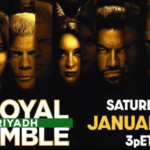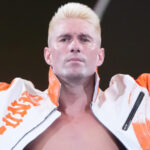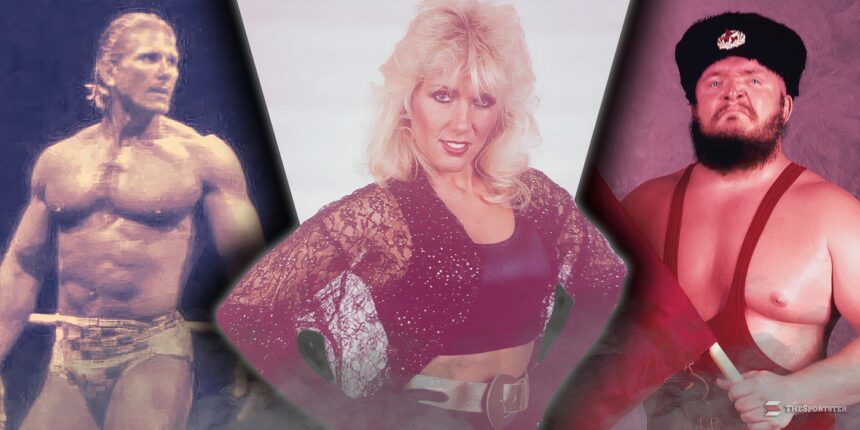The 1980s are often hailed as the peak era for professional wrestling, marked by WWE’s rise to prominence with the launch of WrestleMania, bringing sports entertainment into mainstream culture. Hulkamania dominated the scene, while the NWA thrived under Ric Flair and Starrcade, alongside the Minneapolis AWA’s notable presence in wrestling magazines.
This decade was a wild period that shaped wrestling into a rock-and-roll spectacle, producing countless memorable moments and featuring numerous minor characters who appeared nationwide and on TV. But where are these lesser-known figures today?
Tom Magee, known as “The Megaman,” was a celebrated strength athlete in the ’80s, earning the title “The Strongest Man in the World.” He joined WWE in 1986 and had a standout match with Bret “Hitman” Hart. By 1990, he left wrestling for film and training careers. Though he suffered a violent assault in 2018, Magee remains active in fitness, promoting marathon training.
Tim Horner, a rival of Magee, worked for both Jim Crockett Promotions and WWE in the ’80s. He was part of the UWF Tag Team Champions with Brad Armstrong and later wrestled as the masked Star Blazer in WCW until 1996. Post-retirement, Horner became a WWE producer and was elected mayor of Hamblen County, Tennessee in 2018.
Boris Zhukov, once teaming with Sgt. Slaughter as “Private Jim Nelson,” later joined WWE’s The Bolsheviks with Nikolai Volkoff. His Russian heel persona diminished over time, making him a minor tag team competitor. He wrestled through the ’90s and retired in 2012, later driving trucks for a living until 2024.
Babydoll, a valet trained by Jake Roberts, managed top heels like Gino Hernandez and Ric Flair in the ’80s. She married wrestler Sam Houston, had two kids, and after wrestling, worked 13 years at Walmart. She now lives in North Carolina and occasionally attends wrestling conventions.
Lance Von Erich debuted in 1985 as the kayfabe cousin of the famous Von Erich brothers in WCCW. Despite his impressive look, he was inexperienced and eventually left after contract disputes. After retiring in 1996, he made a fortune owning and selling health clubs in South Africa and now occasionally appears in film interviews. His character inspired MJF’s portrayal in the Iron Claw movie.
Sunshine, Jimmy Garvin’s real-life cousin, served as his valet in WCCW and feuded with Chris Adams and Precious Garvin. She retired in 1988 and has since lived a low-profile life in Florida with her daughter, yet remains fondly remembered by ’80s fans.
Brooklyn Brawler, real name Steve Lombardi, spent over 30 years in WWE mostly in minor roles. His 1989 Brooklyn Brawler gimmick is his best known. Despite many gimmicks, he never reached major stardom but transitioned into a road agent and continues wrestling today with Major League Wrestling.
Dark Journey had a brief wrestling career from 1985 to 1987 but made a significant cultural impact as a biracial female valet who challenged Southern social norms. After wrestling, she moved into business and alternative therapies and was inducted into the Women’s Wrestling Hall of Fame in 2025.
Danny Davis, known as “Nightmare” Danny, had a 20-year wrestling career, including tag team runs and seven USWA Junior Heavyweight titles. He later founded Ohio Valley Wrestling, sold it in 2018, and is the father of former WWE star Doug Basham.
The other Danny Davis, dubbed “Dangerous” Danny, gained attention as a crooked referee and minor wrestler in WWE’s golden era. He won a six-man WrestleMania match in 1987 and retired from full-time wrestling in 1995, later publishing an autobiography detailing his unique journey in wrestling.
Fan Take: These glimpses into the lives of lesser-known ’80s wrestling personalities highlight the rich tapestry beyond the superstars, showing the depth of wrestling history that continues to influence today’s WWE landscape. For fans, rediscovering these stories adds appreciation for the foundational roles these figures played in shaping the sport’s evolution.













